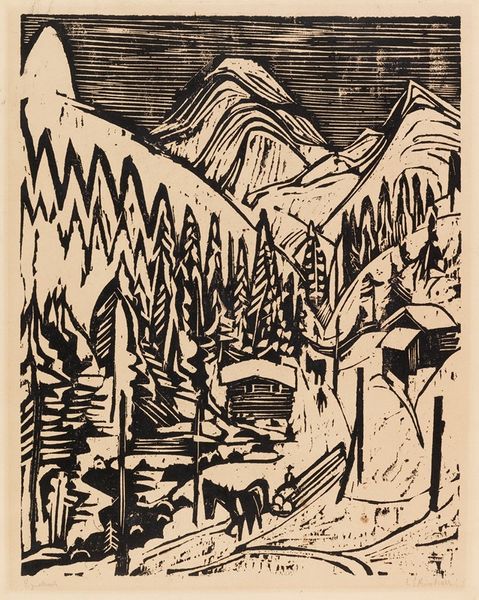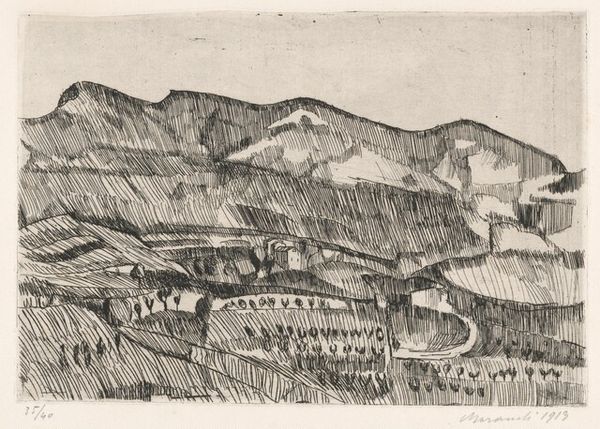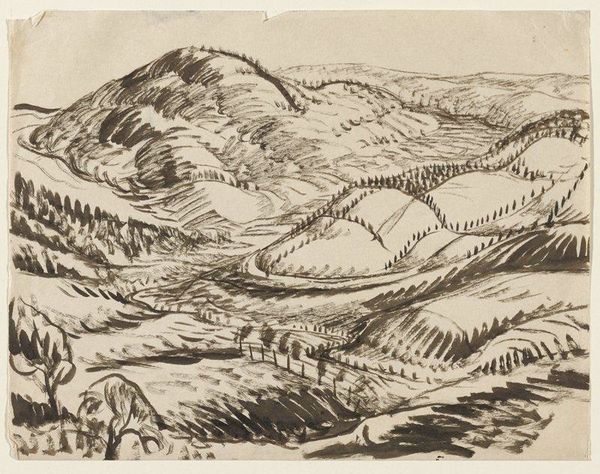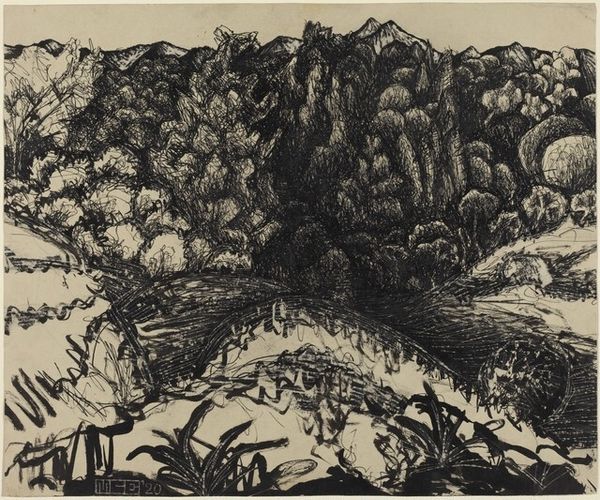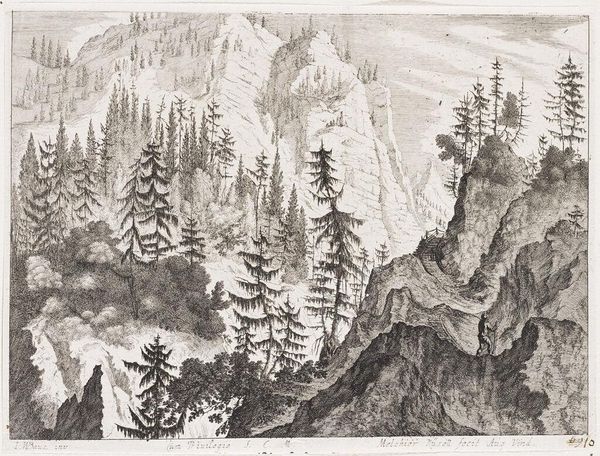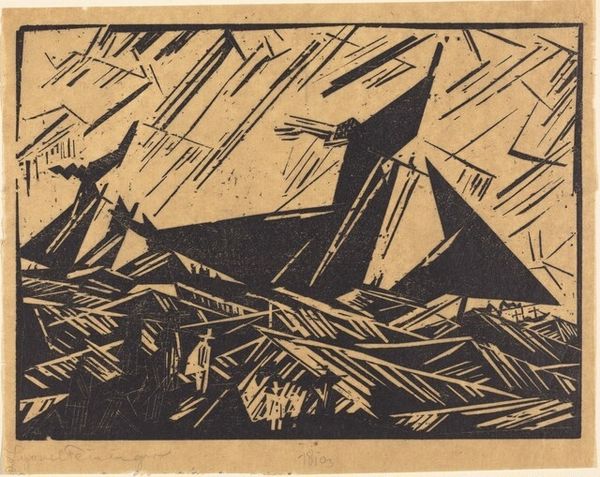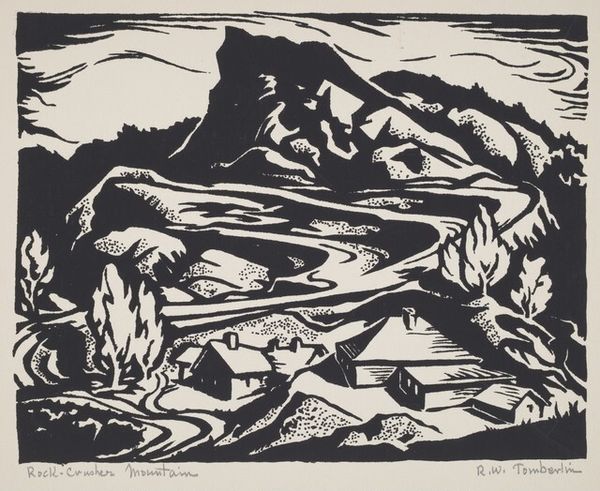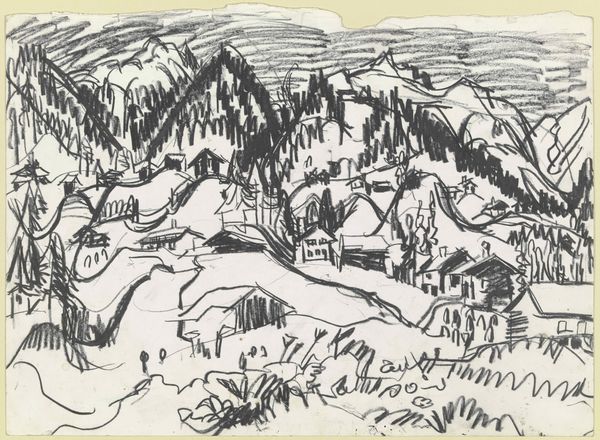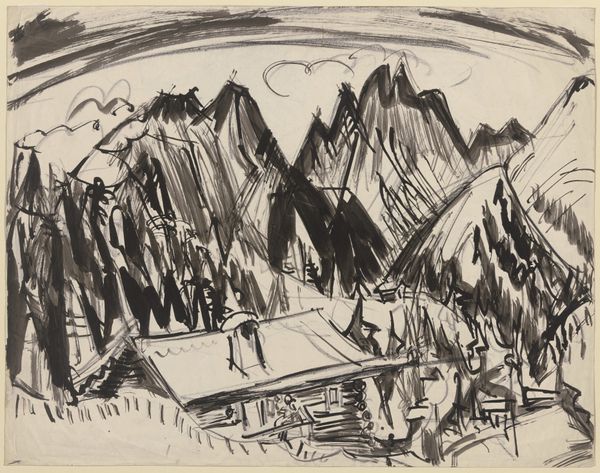
Great Mountain Landscape-at the End of the Sertigal Mountains 1924
0:00
0:00
print, woodcut
# print
#
landscape
#
german-expressionism
#
form
#
expressionism
#
woodcut
Dimensions: 22 x 33 1/2 in. (55.88 x 85.09 cm) (image)25 x 37 3/4 in. (63.5 x 95.89 cm) (sheet)
Copyright: No Copyright - United States
Editor: This is Ernst Ludwig Kirchner's "Great Mountain Landscape-at the End of the Sertigal Mountains," created in 1924. It’s a woodcut, and what strikes me is the stark contrast between the black and white – it gives the whole scene such a dramatic feel. How would you interpret this piece from an art historical point of view? Curator: Notice how Kirchner has manipulated the formal elements of line and form to create this emotional impact. The stark contrast you mention isn't just a technical element; it's intrinsic to the work’s expressive power. Look at the sharp, angular lines defining the mountain range. They are far from naturalistic. Editor: Absolutely, it feels intentionally raw. Almost aggressive in its geometry. Curator: Precisely. Consider the density and distribution of these black lines. They build up areas of shadow, conveying weight and volume in the mountains, but also unease and tension. This technique serves not just to depict the landscape but to convey a feeling *about* the landscape. Note that there’s also an intentional tension introduced by the contrast of the hard angles of the peaks against the few softer forms, such as those indicating trees, below. How do you see the composition guiding your eye? Editor: My eye is definitely drawn upwards, by those very angular peaks, and then back down along the paths he carves into the wood. There's almost no rest; it's always directed in its motion. I hadn't quite realized how active the shapes and contrasts made the whole thing. Curator: An active dynamism that conveys Kirchner's particular and unique interpretation of form. By concentrating on these forms, and considering the way the forms operate with and against each other, one can develop a critical appreciation of what exactly this Expressionist master was trying to represent. Editor: Thank you; focusing on those specific visual elements and their interrelationships helped me move beyond my initial impressions to a better grasp of the artistic intent behind it. Curator: Indeed, and appreciating the ways these stark relationships create tension, but unity, contributes much to a considered perspective.
Comments
No comments
Be the first to comment and join the conversation on the ultimate creative platform.
